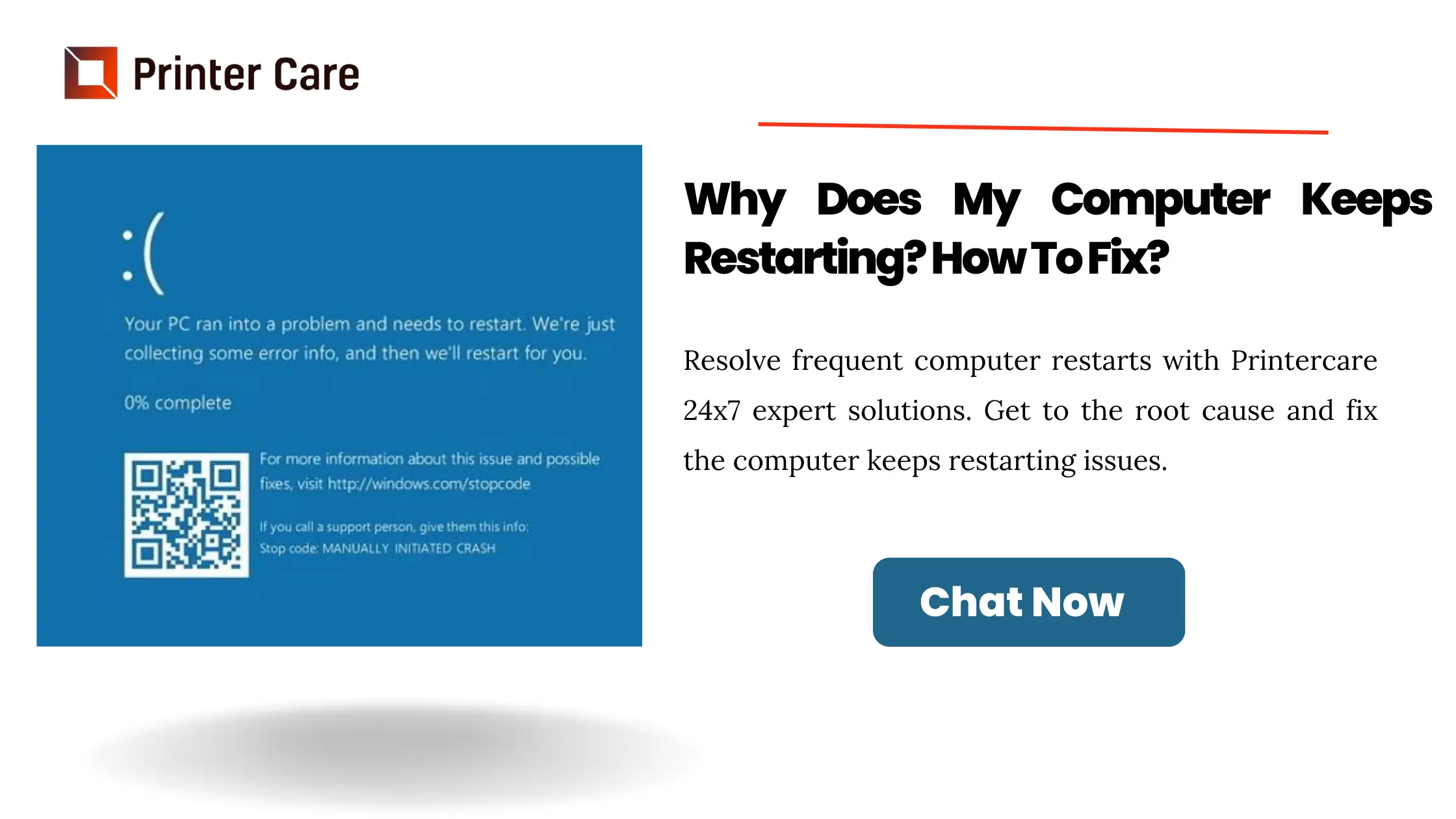If your computer is running slow, you can restart it to give its system files and programs a fresh start. But what if your computer keeps restarting itself without warning?
Don't panic if you wonder "Why does my computer keep restarting?" This guide explains why your computer keeps restarting and provides you with solutions to the problem.
Why Does My Computer Keeps Restarting Randomly?
Several issues can cause a computer to restart without notice, although the majority of them fall into a few broad categories.
- There is an issue with how the power flows to the computer.
- Hardware may be overheating
- Hardware failure
- An issue in software or an operating system
- Malicious Software and malware
How To Fix Computer Keeps Restarting?
Restart the computer in Safe Mode
When troubleshooting a Windows computer, it is necessary to remember that if you are not using a computer in Safe Mode, you can select to boot it up in Safe Mode. The following situations are stopping you from using the computer in Normal Mode:
- It runs and responds to your commands very slowly.
- It freezes on a blank or broken screen.
- Displays pop-ups containing warnings or error notices.
- On a blue or black screen, it displays error warnings in white text.
Safe Mode is a unique analyzing mode for Windows that starts it in a basic state with limited features. And settings to make sure that nothing else interferes with the task you're trying to complete and help you analyze the cause of an issue.
Turn off the Automatic Restart if the computer keeps restarting
When your computer restarts randomly without an explanation or warning, it could be because Windows having an issue and activated the default automatic restart option. This is a safety function, however, you can turn it off if you want to know what is causing the random automatic restarts.
To turn off automatic restart:
- Enter "Control Panel" into the search bar next to the Windows logo. Then click on the Control Panel app.
- Select System and Security.
- Select System.
- Click Advanced System Settings on the left panel.
- Click Settings under Startup and Recovery.
- Check that there is no check mark next to Automatically Restart. If so, uncheck it and click on the OK button.
Uninstall the Most Recent Updates
Windows updates can sometimes install incorrectly, causing the entire operating system to fail. In some cases, the most recent updates installed before your computer started malfunctioning must be uninstalled to restore Windows to a properly operating state.
To uninstall the most recent updates:
- Click the Start button, then choose Settings from the menu.
- Click on the option Update and Security from the Windows Settings menu.
- Select Windows Update from the left pane, then View Update History from the right.
- Click on the Uninstall Updates.
- Click Installed On to arrange the list by the most recent update.
- Select the most recent Update, then click Uninstall and remove it.
- If the option is available, select Change options that are temporarily unavailable. Then, uncheck Turn on rapid startup (recommended) under Shutdown settings. If the option is already unchecked, leave it. To apply the setting, click Save Changes at the bottom.
Uninstall Recently Installed Applications
If you installed an app just before your computer began malfunctioning, then uninstall it to check if it is the source of your problem. Apps can sometimes install incorrectly or may be incompatible with your system.
To uninstall recently installed applications:
- Click the Start button, then choose Settings from the menu.
- Then, choose Apps.
- Scroll down to the app you want to uninstall and click Uninstall.
- If there are any particular instructions, read them carefully. Continue until the application is deleted.
- Some programs may require a reboot.
Unplug Unwanted Peripherals
Printers, webcams, headsets, additional monitors, and other peripherals may cause a computer to malfunction from the start or over time, temporarily or permanently. To see if one or more peripherals are interfering with a computer's function, unplug them and check the computer's state. Unplug any peripherals plugged in right before the computer begins to malfunction. Continue with any further peripherals until you reach the most important ones, such as a mouse and keyboard, which could also be the issue.
Restore Windows to the previous System Restore Point
Windows offers an excellent software called System Restore that allows you to restore your system to a previous state known as a restore point. When you install a new software, driver, or update, restore points are created. Restoring your computer to a previous point in time will not harm your files. Instead, it will restore system modifications and delete anything installed after the restore point is set.
Frequently Asked Questions on Computer Keeps Restarting
Why does my computer keeps restarting?
Could you check that your power supply unit is working properly? Frequent restarts might be caused by faulty power supplies. Could you check for safe power connections to your motherboard and CPU? To protect your computer from power fluctuations, use a surge protector or a UPS.
How can I stop my computer from restarting randomly?
This error is usually caused by a software or driver problem. The simplest solution for this is to navigate to the Control Panel, and then click on the Power Options. After that, select what the power buttons do. Then, uncheck the box next to Turn on fast startup, and change any unavailable options. Otherwise, look into driver updates.
Why does my computer restart at random while I’m playing games?
When a game restarts while you're playing, the most likely cause is overheating. Check that your PC has enough area to vent air. Or try other methods such as increasing the CPU fan or installing a case fan.
How can I get out of the never-ending reboot loop in Windows 10?
While turning on the computer, hold down the FN (Function key). While still holding the FN key, start tapping the Windows key to get around the problem. This should take you to the login screen.
How can you get Windows 10 to stop restarting?
Navigate to the Advanced tab. Click the settings button in the startup and recovery area. Then, in the event of a system breakdown, you will get the option to restart the system automatically. Uncheck this box if it is already selected. Check the option that says "Write events to the system log."

